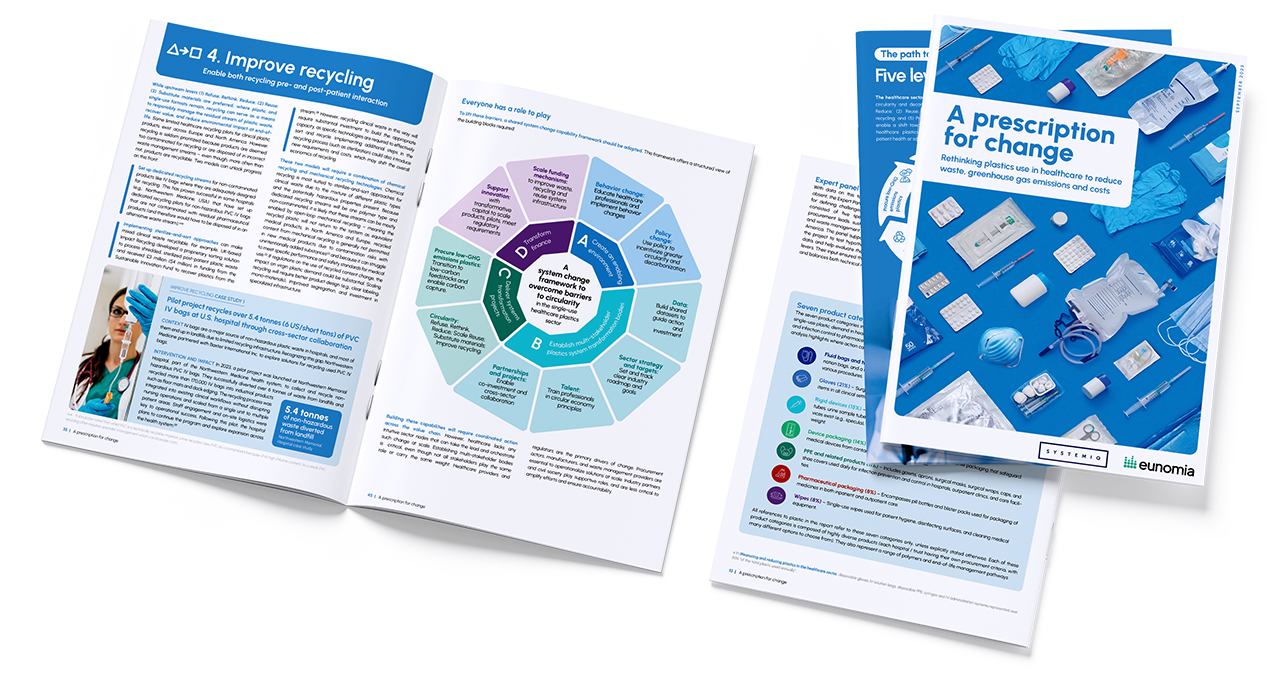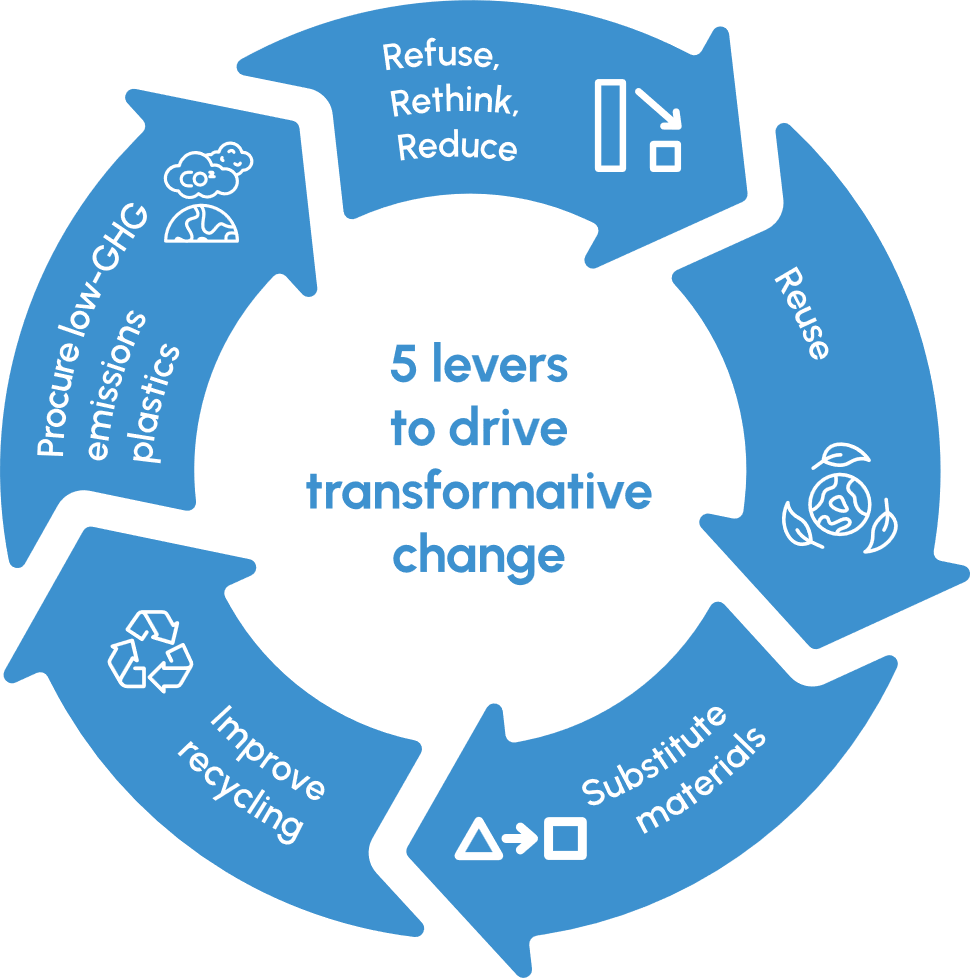A prescription
for change
Rethinking plastics use in healthcare to reduce waste, greenhouse gas emissions and costs
A PRESCRIPTION FOR CHANGE
How reducing single-use plastics in healthcare can cut emissions, save billions, and protect patient care
Plastics are essential to modern healthcare, enabling safe, sterile, and reliable care across hospitals, clinics, and community settings. From gloves and gowns to IV bags, packaging and rigid devices, they support infection prevention and patient safety. Yet their widespread single-use has major consequences: mounting waste, rising greenhouse gas (GHG) emissions and escalating costs.
‘A Prescription for Change: Rethinking plastics use in healthcare to reduce waste, greenhouse gas emissions and costs’, a new report from Systemiq and Eunomia, quantifies the environmental and financial impacts of single-use plastics in healthcare and provides a set of circularity and decarbonisation strategies to accelerate progress.
The report reveals that without action, annual healthcare plastics waste and GHG emissions could rise by 35–40% by 2040, pushing costs for health systems in Europe and North America above $76 billion per year.
To address this challenge, we highlight five evidence-based circular economy strategies that hospitals and suppliers can scale today, without compromising patient health or safety:
- Refuse and reduce unnecessary use (e.g. overuse of gloves)
- Reuse safe, durable alternatives such as gowns, trays, and masks
- Substitute with paper-based or compostable materials where safe
- Improve recycling through better design and segregation
- Procure low-GHG plastics from biobased or CCS-enabled sources
If implemented at scale across Europe and North America, these interventions could cut single-use plastics by 53%, reduce GHG emissions by 55%, and deliver annual savings of $18 billion by 2040 – compared with a Business-as-Usual Scenario.
A TRANSFORMATIVE FUTURE
If adopted at scale across Europe and North America by 2040, these interventions could result in significant environmental and economic benefits
A High-Ambition Scenario 2040 could result in:
1.4
53% vs BAU
5.8
55% vs BAU
58
24% vs BAU
Crucially, the report demonstrates that proven circular economy solutions already exist: around the world, hospitals are piloting reusable gowns and surgical trays, manufacturers are redesigning packaging for recyclability, and innovators are recovering hard-to-recycle waste streams. But these efforts remain fragmented and under-resourced, lacking a shared, scalable strategy.
‘A Prescription for Change’ is the first systems-level assessment of single-use plastics in healthcare. It is designed to equip policymakers, healthcare executives, procurement consortia, manufacturers, and civil society leaders with the data, scenarios, and strategic direction needed to align healthcare plastics use with climate targets, resource efficiency, and patient safety.
WEBINAR
Europe focus
North America focus
ACKNOWLEDGEMENTS
This report was made possible thanks to a grant from Takeda Pharmaceuticals*, with support from a diverse group of experts and stakeholders committed to building a more sustainable and resilient healthcare plastics system.
*Takeda Pharmaceuticals’ involvement in this research was solely as a financial supporter. Takeda was not involved in the organizing of the research or the creation of this report.
DOWNLOAD THE REPORT











